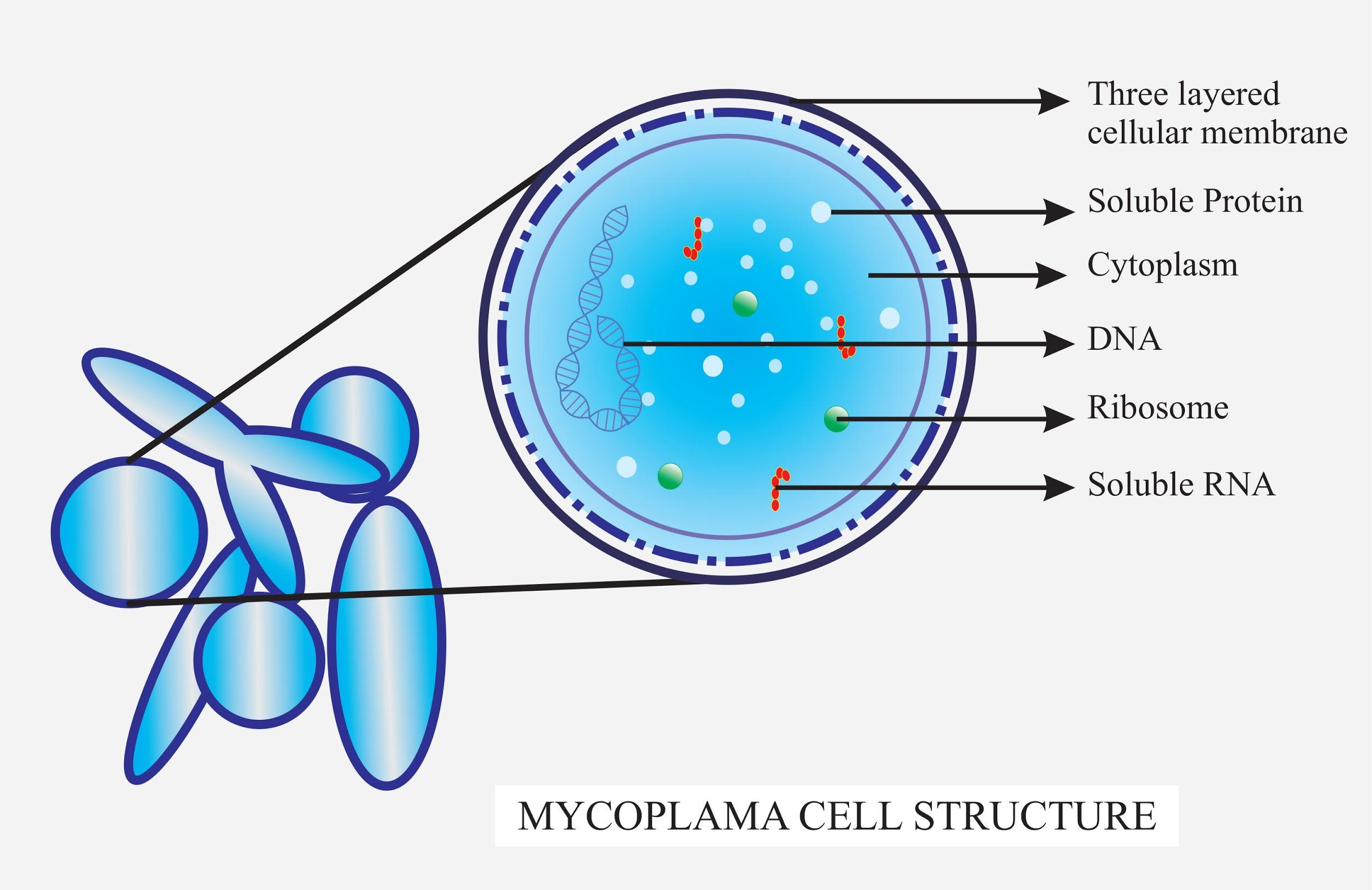
Describe Mycoplasma and write its features.
Answer
476.4k+ views
3 likes
Hint: Mycoplasmas are known to be the smallest living organisms on earth that completely lack a cell wall. These organisms can survive even in absence of oxygen. Many of these mycoplasmas are pathogenic to animals and plants.
Complete Solution:
Mycoplasma is a genus of bacteria that lack the cell wall around the cell membranes. They are the simplest self-replicating bacteria. The basic form of Mycoplasma is coccus. They are also known as mollicutes.
The cell contains a minimum number of organelles like plasma membrane, a genome which consists of a double-stranded circular DNA molecule which is naked and ribosomes which are of 70S type.
Mycoplasmas reproduce by binary fission but cytoplasmic division occurring frequently may lag behind genome replication which results in the formation of multinucleate filaments.
As they lack cell walls, they are naturally resistant to antibiotics that target cell wall synthesis. It lacks a nucleus and other membrane-bound organelles. These organisms are pleomorphic i.e., they can change their shape.
Additional information:
Mycoplasmas have triple-layered cell membranes. They show similarity with prokaryotes in the majority of their general characteristics.
Mycoplasmas are parasites or commensals of humans, animals, and plants. They have been found in pleural cavities of cattle that were suffering from pleuropneumonia.
These organisms are also referred to as PPLO(pleuropneumonia-like organisms)or MLO(mycoplasma-like organisms).
As mycoplasmas lack a cell wall, they are resistant to beta-lactam antibiotics(e.g., Penicillin).

Note:
Mycoplasma is the smallest living cell without a cell wall. The smallest living cell with a cell wall is bacteria. Members of Archaebacteria and Eubacteria belong to this category.
Complete Solution:
Mycoplasma is a genus of bacteria that lack the cell wall around the cell membranes. They are the simplest self-replicating bacteria. The basic form of Mycoplasma is coccus. They are also known as mollicutes.
The cell contains a minimum number of organelles like plasma membrane, a genome which consists of a double-stranded circular DNA molecule which is naked and ribosomes which are of 70S type.
Mycoplasmas reproduce by binary fission but cytoplasmic division occurring frequently may lag behind genome replication which results in the formation of multinucleate filaments.
As they lack cell walls, they are naturally resistant to antibiotics that target cell wall synthesis. It lacks a nucleus and other membrane-bound organelles. These organisms are pleomorphic i.e., they can change their shape.
Additional information:
Mycoplasmas have triple-layered cell membranes. They show similarity with prokaryotes in the majority of their general characteristics.
Mycoplasmas are parasites or commensals of humans, animals, and plants. They have been found in pleural cavities of cattle that were suffering from pleuropneumonia.
These organisms are also referred to as PPLO(pleuropneumonia-like organisms)or MLO(mycoplasma-like organisms).
As mycoplasmas lack a cell wall, they are resistant to beta-lactam antibiotics(e.g., Penicillin).

Note:
Mycoplasma is the smallest living cell without a cell wall. The smallest living cell with a cell wall is bacteria. Members of Archaebacteria and Eubacteria belong to this category.
Recently Updated Pages
Express the following as a fraction and simplify a class 7 maths CBSE

The length and width of a rectangle are in ratio of class 7 maths CBSE

The ratio of the income to the expenditure of a family class 7 maths CBSE

How do you write 025 million in scientific notatio class 7 maths CBSE

How do you convert 295 meters per second to kilometers class 7 maths CBSE

Write the following in Roman numerals 25819 class 7 maths CBSE

Trending doubts
State and prove Bernoullis theorem class 11 physics CBSE

What are Quantum numbers Explain the quantum number class 11 chemistry CBSE

Write the differences between monocot plants and dicot class 11 biology CBSE

1 ton equals to A 100 kg B 1000 kg C 10 kg D 10000 class 11 physics CBSE

State the laws of reflection of light

In northern hemisphere 21st March is called as A Vernal class 11 social science CBSE




